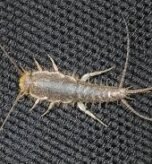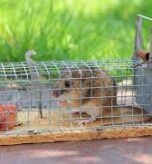The common raccoon, Procyon lotor, is a highly adaptable mammal known for its distinctive masked face and ringed tail. These intelligent creatures have successfully expanded their range from forests to urban neighborhoods, earning them the nickname “trash pandas.” This has sparked significant interest in the raccoon diet and how it impacts their health and behavior. This guide provides a comprehensive overview of what raccoons eat, the health risks they pose, and how we can coexist peacefully with them.
The Natural Raccoon Diet in the Wild
In their natural habitat, raccoons are true omnivores, eating a wide variety of both plants and animals. This dietary flexibility is a key reason for their remarkable adaptability.
How a Raccoon’s Diet Changes with the Seasons
The raccoon diet fluctuates significantly with the seasons.
- Spring and Summer: In the spring and early summer, their diet consists mainly of insects, worms, and other small animals that emerge during the warmer months. Crayfish are a particular favorite, and raccoons often hunt for them in shallow water using their sensitive front paws.
- Fall: As fall approaches, their diet shifts toward fruits and nuts like acorns and walnuts. These high-calorie foods help them build up fat reserves for the winter.
- Winter: During the colder months, when food is scarce, raccoons rely on their stored body fat and any food they can scavenge.
What Do Raccoons Eat in Their Natural Habitat?
In wooded areas near water, the natural raccoon diet includes:
- Invertebrates: Insects like beetles and grasshoppers, earthworms, and especially crayfish.
- Plants: A variety of fruits such as apples, grapes, and berries, as well as nuts, corn, and squash.
- Vertebrates: They prefer easy-to-catch prey like fish, frogs, small mammals (mice, squirrels, rats), and bird eggs. They are also important scavengers, consuming carrion like roadkill.
The Famous “Dousing” Behavior of Raccoons
A characteristic behavior associated with the raccoon diet is their tendency to “wash” their food in water. This action, which gives them their scientific name lotor (meaning ‘washer’), actually increases the tactile sensitivity of their front paws. It allows them to better examine underwater food items.
The Impact of Urbanization on the Raccoon Diet
The spread of cities into natural landscapes has forced raccoons to adapt. As a result, many now thrive in urban areas where human-generated food is abundant.
The Shift to a Human-Based Raccoon Diet
Urban raccoons are notorious for scavenging from human sources. Their diet in the city often includes:
- Garbage cans
- Compost piles
- Pet food bowls left outdoors
- Outdoor grills
The easy availability of this food is a primary reason for their success in cities.
Health Problems Caused by an Urban Raccoon Diet
Despite the convenience, a steady diet of human garbage is detrimental to a raccoon’s health. Studies show that urban raccoons are heavier and have higher blood glucose levels than their wild counterparts. This raises concerns about raccoon obesity and other health issues, as processed human foods lack the essential nutrients wild animals need.
Foods You Should Never Feed a Raccoon
It is crucial to understand that many human foods are toxic or harmful to raccoons. You should never feed them:
- Processed foods, sugary treats, or high-salt items.
- Toxic foods like chocolate, onions, and caffeine.
- Pet food, which is not formulated for a wild animal’s active lifestyle.
The Impressive Intelligence of Raccoons
Raccoons are highly intelligent, a trait that greatly contributes to their success in diverse environments.
Raccoon Cognitive Abilities and Senses
- Sense of Touch: Their most important sense is touch, which is facilitated by their hypersensitive front paws. Nearly two-thirds of the part of their brain dedicated to sensory perception is specialized for interpreting tactile impulses.
- Problem-Solving: Raccoons have impressive problem-solving skills and can remember solutions to complex tasks for at least three years.
- Other Senses: They have a broad auditory range and a keen sense of smell, which is vital for finding food.
Innovative Foraging and Puzzle-Solving
Research has shown that raccoons are flexible and creative problem-solvers. They can successfully solve novel foraging tasks, like opening complex puzzle boxes, and can even learn multiple solution types. This highlights their remarkable ability to adapt and acquire resources in complex urban environments.
Risks and Management Strategies for Raccoons
While fascinating, the increasing presence of raccoons near people poses several risks.
Raccoon Diseases and Transmission to Humans
Raccoons can carry and transmit several dangerous diseases to humans and pets.
- Rabies: They are a primary carrier of rabies in the United States.
- Roundworm (Baylisascaris procyonis): This parasite, found in raccoon feces, can cause severe neurological damage in humans.
- Giardiasis and Leptospirosis: These diseases can be spread through contact with raccoon feces or urine.
Common Human-Wildlife Conflicts
The presence of raccoons in urban areas often leads to conflict.
- Property Damage: They can cause significant damage by raiding trash cans, tearing through roofs to create dens in attics, and destroying gardens.
- Aggression: A raccoon that gets used to being fed by humans can lose its natural fear and may become aggressive.
How to Prevent Raccoon Problems
Effective long-term management of raccoons involves making your property less attractive to them.
- Secure Food Sources: Tightly secure your trash cans with bungee cords or locks. Do not leave pet food outdoors overnight, and promptly clean up fallen fruit from your yard.
- Use Deterrents: Employ loud noises, motion-activated lights, or unpleasant smells (like spicy pepper sprays) to discourage them.
- Create Physical Barriers: Use sturdy fencing to protect gardens. Cover chimneys and roof vents with animal-proof guards to prevent them from using your home as a den.
Ethical Considerations for Coexistence
Wildlife experts strongly advise against intentionally feeding wild raccoons. It can lead to over-reliance on human food, nutritional problems, and increased conflict. Keeping raccoons as pets is also not recommended due to their unpredictable nature and the ethical concerns of wild animal ownership. If you find an orphaned or injured raccoon, you should contact a licensed wildlife rehabilitator.
Conclusion: Fostering Coexistence with Raccoons
Raccoons are highly adaptable and intelligent creatures. Their complex behaviors and diverse diet underscore their important role in our ecosystems. While their presence in our cities has led to challenges, understanding their natural history is key. By implementing informed prevention strategies, refraining from feeding them, and respecting their wild nature, we can mitigate conflicts and foster a more harmonious coexistence with these fascinating animals.



